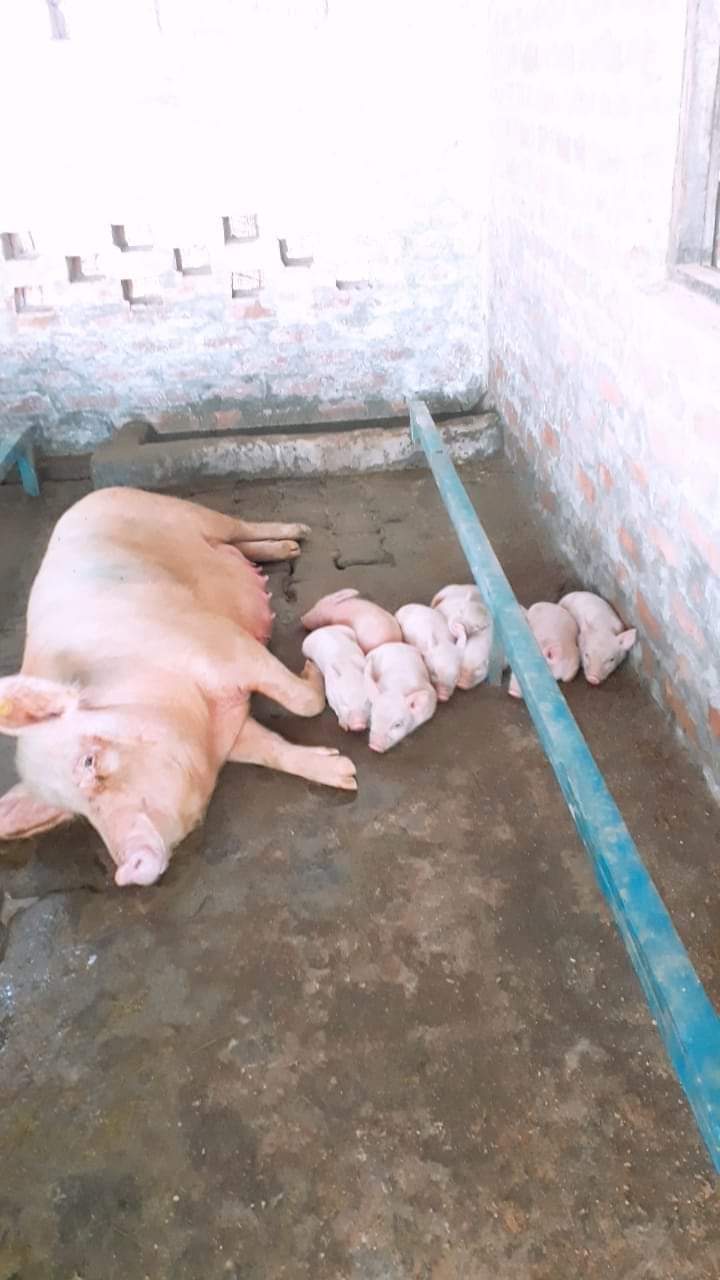Care of the Sow During Pre Farrowing and farrowing
Proper care of the sow during gestation, farrowing, and lactation is a means to reach a goal — a large litter of healthy pigs at birth that will remain healthy and grow rapidly. Care during this time must also prepare the sow for a successful repeat performance at the earliest time within the system of weaning and rebreeding used. The sow must reach farrowing in the best nutritional and microbiological health for herself and the expected litter. Properly balanced rations should be fed in recommended amounts so that newborn pigs are well developed and strong. A herd health program that assures minimal exposure of the sow to disease or disease carriers during gestation is essential for maximal litter survival during the first weeks of life and for effective growth to weaning and market. The sows should be managed in a gentle and confident manner and on a regular daily schedule.
Pre-farrowing
Deworming the Sows–
If there is indication of worm infestation, sows should be dewormed about two weeks before moving to farrowing crates or pens. Treatment for external parasites at least twice (in approved repeat times for the product used) also should be accomplished within a few days before movement to the farrowing facility.
Preparing the Farrowing Unit. If possible, the total farrowing unit should be cleaned completely of organic matter, disinfected, and left unused for 5-7 days before a new group of sows is placed in the unit. When this is not practical, at least the individual pen, stall, or crate should be completely cleaned of organic matter and disinfected before a new sow is placed in the unit. Disinfectants are ineffective unless the cleaning job is complete. There are many good disinfectants available, including the quaternary ammonium compounds, iodoform compounds and others such as lye, to use when the cleaning job is done well. Some disinfectants such as those that contain coal tars or lye should be thoroughly rinsed off after several hours, especially from surfaces having direct contact with pigs.
Washing the Sow– Before the sow is placed in the farrowing pen, wash the teats and belly with mild soap and warm water. This will eliminate soil and fecal material that may contain numerous bacteria that are potential diarrhea-producing agents for the nursing pigs. This procedure will also eliminate ascaris (roundworm) eggs that would serve as a source of infection to the nursing pig.
Feeding the Sow– During prefarrow in the facility, sows can be fed as they have been during gestation, that is limit fed 2.5-3.00kg./day depending on weather and housing conditions. Better results are often reported by producers, however, from feeding a laxative ration prefarrowing to preventing constipation. Constipation can be prevented or corrected by changing to a bulky diet, by use of linseed meal as part of the protein in the ration, or by use of other laxative ingredients. Oats or wheat bran may be used as 25% of the grain to create a bulky ration; in some areas, other fibrous feeds such as alfalfa meal or beet pulp may be preferred. Remove bulky ingredients from the sow ration soon after farrowing. Water should be freely available, but spillage that could cause wetness of the pen should be prevented.
Schedule of Events
First week after weaning—breed sows.
Three weeks before farrowing—treat for internal andexternal parasites.
One week before farrowing—repeat treatment for internal and external parasites.
At 110 days after breeding, thoroughly wash sow and move to farrowing facility; begin feeding laxative ration.
From 111 days to farrowing—observe for signs of approaching farrowing. Attend at farrowing, or make judgment that attendance is not warranted.
Provide special care for weak or small pigs, and for large litters. Observe sow and litter for signs of problems.
Bring sow to maximal feed level as soon as possible after farrowing.
Cull sows at weaning on basis of productivity, temperament, and other economic factors.
Dr Manish kumar, TVO, Madhubani.


